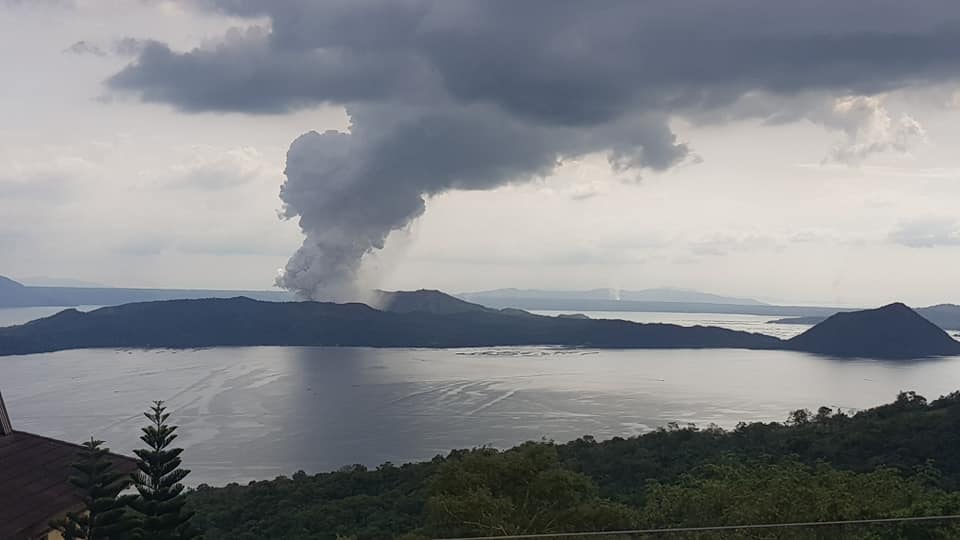

The ongoing eruption event of the second-most active volcano in the Philippines is… complicated. Taal Volcano (pronounced Ta-al) is located about 37 miles south of the country’s capital, Manila. On Monday, the volcano became active with a steam-driven or phreatic explosion, and spurted 1,600-foot-tall fountains of lava for about an hour and a half. Experts say that could happen again.
Residents of the 8.7-mile danger zone around Taal are still evacuated, and people from a larger zone are being encouraged to be cautious. The Philippine Institute of Volcanology and Seismology (PHIVOLCS) is also warning pilots to avoid flying through the area.
Like many volcanoes around the Pacific Rim, Taal is what’s known as an “explosive volcano,” says Katherine Kelley, a University of Rhode Island professor of oceanography. This kind of volcano commonly occurs above places where one of the Earth’s tectonic plates is pushed underneath another as part of an active collision. As magma forms, the hot, high-pressure environment created by all this pushing imbues the magma with gases—usually carbon dioxide, water, and sulphur dioxide—that start to escape as it gets closer to the surface and the ambient pressure becomes lower. The resulting bubbles of gas popping are what gives explosive volcanoes their name.
Embed from Getty ImagesRelated reading: Where does volcanic lightning come from?
“Taal in particular has a lot of potential hazards because the volcanic center is in a large lake,” says Kelley. That raises the possibility that the heat from escaping magma could create huge clouds of steam, which would send toxic ash rocketing high in the sky, or that an explosive eruption could start a tsunami. Tremors have continued throughout the week, a sign of ongoing business underground.
“This could have been the single release of pressure that the system needed, and it will quiet down,” Kelley says. But the other option is harder to forecast: continued movement of the tectonic plates would lead to continued eruptive activity, she says. Whether that would mean more explosive eruptions is pretty much impossible to predict. “Volcanoes are dynamic systems that we don’t understand completely,” she says.
Embed from Getty ImagesAs of Thursday, the volcano continues to emit volcanic ash, which is toxic to humans, as well as sulphur dioxide fumes. CNN reports that about 44,000 people are staying in shelters set up away from the danger zone, and more may be staying with families or friends. Some people are heading back into the zone to rescue their pets and livestock. NPR reports that volunteers are helping with the animal rescue effort.
Renato Solidum, the director of PHIVOLCS, told NPR that the settlements inside the danger zone are technically illegal, and the area is a protected national park. He called it an “accident waiting to happen.”
Still, for those evacuated and the animals they left behind, it’s bound to be a long week. Whatever happens next, recovery from the eruptions will likely be a long process for those who lived in the region.
